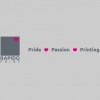
Our PLA is a hard, easy to use high-grade recycled filament, ideal for 3D printing. Due to a low shrinkage factor, PLA will not deform after cooling. Poly Lactic Acid is a biodegradable plastic made from renewable natural resources and one of the most popular materials for 3D printing. With 3D printing increasingly used in industry for the production of end-use parts, "which filaments are heat resistant?" is a frequently asked question at Filamentive HQ.
This article therefore seeks to answer those very questions - specifically, defining what heat. Due to the wide range of PLA materials, "which PLA filament is for me?" is a frequently asked. Filamentive is premium filament UK brand, using sustainable materials where possible, without compromising quality - guaranteed. Filamentive is the 3D printer filament of choice for thousands of UK businesses - ranging from industries such as aerospace, architectural, .
PEEK vs PEKK vs PPSU vs Ultem (PEI) PEEK, PEEK CF, PEKK, PPSU and Ultem (PEI) are all high performance polymers offering dimensional stability, heat resistance, high strength and broad chemical resistance.
This article therefore seeks to answer those very questions - specifically, defining what heat. Due to the wide range of PLA materials, "which PLA filament is for me?" is a frequently asked. Filamentive is premium filament UK brand, using sustainable materials where possible, without compromising quality - guaranteed. Filamentive is the 3D printer filament of choice for thousands of UK businesses - ranging from industries such as aerospace, architectural, .
PEEK vs PEKK vs PPSU vs Ultem (PEI) PEEK, PEEK CF, PEKK, PPSU and Ultem (PEI) are all high performance polymers offering dimensional stability, heat resistance, high strength and broad chemical resistance.
Services
In late 2015, founder and director of Filamentive, Ravi Toor, recognised a need for change in the 3D printing market.
After studying an environment-based degree and having run a 3D printing business previously, Ravi realised that the high quality filament in the market was not sustainable, and the recycled filament options were not up to standard.
Upon realisation, Ravi sought to create a new brand of filament, which simultaneously addresses environmental impact and the need for high quality to meet the needs of the 3D printing market.
After studying an environment-based degree and having run a 3D printing business previously, Ravi realised that the high quality filament in the market was not sustainable, and the recycled filament options were not up to standard.
Upon realisation, Ravi sought to create a new brand of filament, which simultaneously addresses environmental impact and the need for high quality to meet the needs of the 3D printing market.
Short for polylactic acid, PLA is a bioplastic derived from plant-based sources.
PLA is the easiest polymer to print and is used by the majority of 3D printer users.
Whilst more sustainable than fossil fuel plastics, it's important to note than PLA is not biodegradable in soil, home compost or landfill - refuting claims by some marketers of PLA filament.
To reduce usage of virgin polymers, we work with industry partners to recycle post-industrial PLA waste materials that would otherwise be sent to landfill.
PLA is the easiest polymer to print and is used by the majority of 3D printer users.
Whilst more sustainable than fossil fuel plastics, it's important to note than PLA is not biodegradable in soil, home compost or landfill - refuting claims by some marketers of PLA filament.
To reduce usage of virgin polymers, we work with industry partners to recycle post-industrial PLA waste materials that would otherwise be sent to landfill.
Polyethylene Terephthalate Glycol - or PETg for short - is an increasingly popular 3D printing filament, offering ease of printing akin to PLA, and strength comparable to ABS, without the downsides.
PET(g) plastic originates from non-renewable sources, and recycling rates remain low.
To reduce the consumption of virgin plastic, our PETg is made from recycled PETg plastic where possible.
PET(g) plastic originates from non-renewable sources, and recycling rates remain low.
To reduce the consumption of virgin plastic, our PETg is made from recycled PETg plastic where possible.
We have changed this.
Our rABS is an engineering-grade filament, made from >60% recycled materials to reduce the use of virgin ABS and lower energy demand.
We have also ensured that the material features minimal warping, as well as excellent adhesion - both interlayer and to the bed.
Filamentive rABS has enhanced strength compared to regular ABS making it ideal for functional prototypes and end-use parts.
Our rABS is an engineering-grade filament, made from >60% recycled materials to reduce the use of virgin ABS and lower energy demand.
We have also ensured that the material features minimal warping, as well as excellent adhesion - both interlayer and to the bed.
Filamentive rABS has enhanced strength compared to regular ABS making it ideal for functional prototypes and end-use parts.
ASA is an engineering-grade filament, featuring many of the same properties as our rABS - including high strength - with the added benefit of UV resistance to withstand outdoors environments.
This filament has been modified to ensure zero warping and excellent adhesion - both interlayer and to the bed - to ensure efficient 3D printing.
Recommended for functional prototypes and end-use parts, particular those which be positioned outdoors / exposed to the elements.
This filament has been modified to ensure zero warping and excellent adhesion - both interlayer and to the bed - to ensure efficient 3D printing.
Recommended for functional prototypes and end-use parts, particular those which be positioned outdoors / exposed to the elements.
Reviews

Be the first to review Filamentive.
Write a Review

